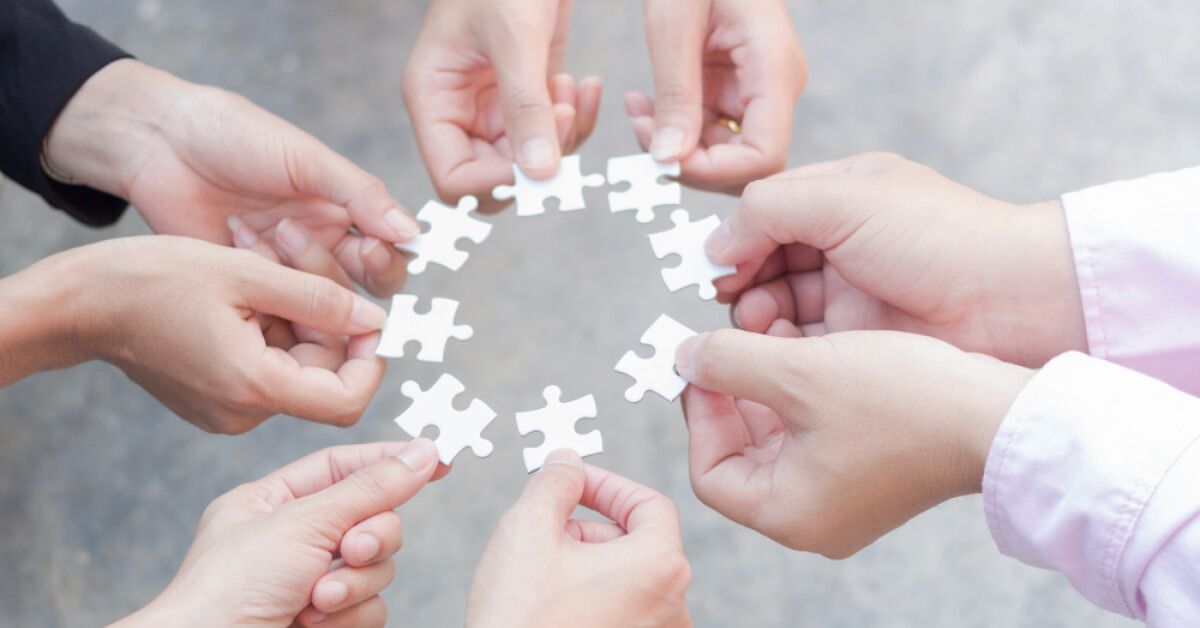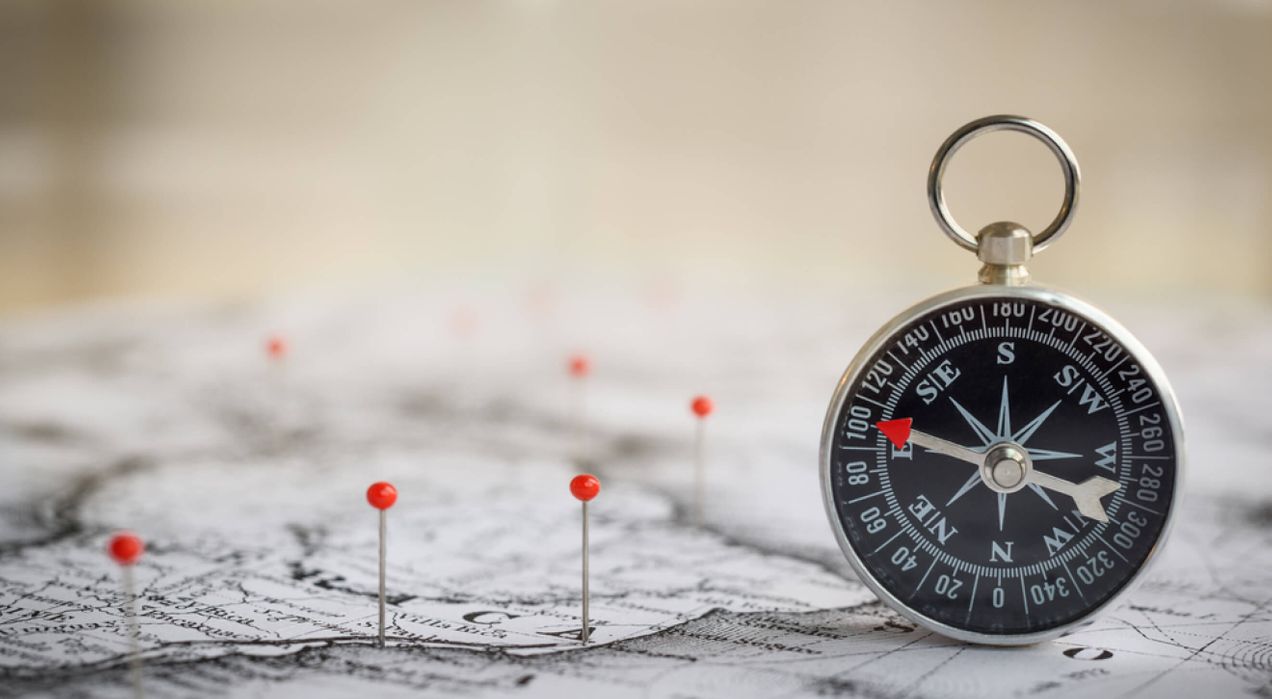How to manage a multigenerational workforce: Top challenges, best practices and tips

You know that one chaotic family group chat? Gen Z replies in memes or TikTok references that no one over 30 understands. Your Millennial cousin reacts with emojis and gifs. The Boomers? They type in ALL CAPS and end every message with a “...” like it's a dramatic pause.
And then there’s always that one Gen X uncle who just drops a vague “OK” after hours of silence—no context, no emotion, just “OK.”It’s funny, frustrating, and somehow… functional. Despite wildly different styles, everyone stays connected (and probably argues about dinner plans).
Now imagine that dynamic, only instead of planning Thanksgiving, you’re trying to align on quarterly goals.
Welcome to the generational workforce. From communication preferences to values, priorities, and energy levels—it’s a complex, fascinating blend. But here’s the good news: once you learn how to speak everyone’s language, the silos fall, collaboration soars, and the workplace starts to feel a lot more like that perfectly dysfunctional, lovable group chat.
Let’s decode how to make it work across the ages—without needing a translator.
What is a multigenerational workforce?

A multigenerational workforce refers to a professional environment where employees from several distinct age groups work together—often spanning five generations. This typically includes the Silent Generation, Baby Boomers, Generation X, Millennials, and Generation Z. Each of these groups has been shaped by different historical events, cultural shifts, and technological changes, resulting in diverse perspectives, different values, and working styles.
In today’s world, longer life spans and evolving career expectations have made it increasingly common to see a 22-year-old data analyst collaborating with a 60-year-old operations lead. While this blend brings a wealth of experience, creativity, and innovation, it also introduces complexities in communication, motivation, and management.
The value of a multigenerational workforce lies in its range of insights. Older generations may bring institutional memory and strategic foresight, while younger employees offer fresh thinking and tech fluency. However, managing such diversity requires intentional strategies to bridge generational gaps, avoid stereotypes, and ensure everyone feels seen and heard.
As organizations rethink how to manage 5 generations in the modern workplace, embracing this diversity isn’t just a nice-to-have—it’s a strategic advantage. When approached thoughtfully, a multigenerational team becomes more than a mix of ages; it becomes a powerful engine of collaboration and growth.
What are the 5 generations in the workforce?

There are five generations in the workforce. They are –
Traditionalists/ Silent Generation (Born: 1928-1945)
Individuals from the silent generation are known to be mature workers. They are also known for their strong work ethic, loyalty, and respect for authority. They often bring decades of experience to the workplace.
Baby Boomers (Born: 1946-1964)
Many Baby Boomers value teamwork and tend to be optimistic. Their optimism and dedication are often reflected in their strong commitment to their work and the organizations they serve.
This generation's wealth of experience and leadership skills frequently positions them in pivotal roles within companies, where they play a crucial role in guiding and mentoring their colleagues, fostering a sense of continuity and stability in the workplace.
Generation X (Born: 1965-1980)
Generation X is marked by their self-reliance and adaptability. They are proficient in technology and often serve as a bridge between the older and younger generations in the workplace.
Their independent thinking, combined with their ability to embrace and leverage new technologies, contributes to a dynamic work environment where they help facilitate collaboration and understanding among different age groups, making them invaluable team members and leaders.
Millennials (Born: 1981-1996)
Also known as Generation Y, Millennials are driven by purpose. They are often characterized by their proficiency in technology and collaborative nature. Millennials highly value work-life balance, seeking a harmonious integration of their personal and professional lives.
They are enthusiastic about opportunities for growth and development, making them proactive in their careers and eager to contribute to organizations that align with their values and offer avenues for self-improvement.
Generation Z (Born: 1997-Present)
The newest addition to today's labor force is Gen Z. This generation is known for their fresh perspectives, digital expertise, and a strong desire for authenticity in the workplace.
Having grown up in an era of rapid technological advancements, Gen Z is well-equipped to navigate digital landscapes, making them invaluable resources for organizations seeking to leverage technology for growth and innovation.
Bonus: Generation Alpha (Born: 2011–2025)
While not yet in the workforce, Gen Alpha is already shaping the future of work through their relationship with technology. Growing up with AI, virtual classrooms, and hyper-connectivity, they will likely demand even more personalized, tech-integrated, and socially conscious work environments. Employers preparing for the long-term would do well to start understanding their emerging expectations now
Key aspects of a multigenerational workforce

A multigenerational workforce isn't just about age differences—it’s about navigating layered perspectives shaped by vastly different life stages and historical moments. To lead effectively, organizations must understand the subtle but powerful ways these factors shape collaboration and performance.
- Decision-making speed and style: Older employees may rely on structured processes and thorough analysis, while younger staff often prefer agile, iterative approaches. Balancing these rhythms is a real challenge in managing multigenerational workforce issues without stalling progress.
- Feedback expectations: Traditionalists and Boomers may be used to formal, top-down feedback at set intervals. In contrast, Gen Z and Millennials often expect real-time, informal feedback loops. This misalignment can lead to frustration or disengagement if not addressed intentionally.
- Interpretation of hierarchy: Some generations are more comfortable with titles and chain-of-command structures, while others value flat, collaborative models. Knowing how to manage 5 generations in the modern workplace means clarifying authority without enforcing outdated norms.
- Workplace identity and visibility: Not all employees define success the same way. While older generations may tie identity to tenure or titles, younger ones may prioritize visibility through impact, innovation, or personal branding.
- Pace of change adoption: Comfort with change isn’t just about tech—it includes shifting norms, language, and policies. A multigenerational workforce will interpret change differently based on context, not just age, which requires more thoughtful rollout strategies.
Multigenerational workforce benefits

Now, let's explore the benefits of having a multigenerational workforce:
- Diverse skill sets and experience: generation brings unique skills, experiences, and perspectives to the table. This diversity can be harnessed to solve problems creatively and drive innovation.For instance, when Baby Boomers' decades of experience and deep industry knowledge combine with Gen Z's digital expertise, organizations can develop cutting-edge solutions that effectively bridge the past and the future, creating a competitive edge in the marketplace.
- Knowledge sharing: As mature employees, older generations can pass down valuable institutional knowledge and mentor younger employees, facilitating the transfer of critical skills and expertise. Additionally, this intergenerational knowledge sharing can lead to a seamless succession plan, ensuring a smooth transition of leadership roles as seasoned employees retire.
- Enhanced creativity: This diversity of thought and approach can result in a vibrant melting pot of ideas, stimulating creativity and fostering an environment where innovative solutions emerge naturally, setting the organization apart in a rapidly evolving business landscape.
- Better customer understanding: A diverse workforce enhances market insights and enables organizations to tailor their products and services to a broader range of customer demographics, resulting in more effective marketing strategies and customer satisfaction.
- Improved employee engagement: Multigenerational workplaces that promote diversity and inclusion tend to see higher levels of employee engagement and job satisfaction. This can lead to increased productivity and reduced turnover, benefiting both employees and the organization.
- Effective succession planning: Multigenerational workplaces that promote diversity and inclusion tend to see higher levels of employee engagement and job satisfaction. This can lead to increased productivity and reduced turnover, benefiting both employees and the organization.
- Broader talent pool: Hiring across multiple generations broadens an organization's talent pool. This diversity ensures that the organization has access to various skills, experiences, and perspectives, enabling it to tackle diverse challenges and seize opportunities more effectively.
- Increased innovation: With a multigenerational workforce, organizations have access to a wider range of perspectives and approaches, leading to increased innovation. By leveraging the diverse backgrounds and experiences of employees from different generations, companies can foster a culture of innovation that drives continuous improvement and keeps them ahead of the competition.
- Flexible problem-solving: Each generation brings its own problem-solving techniques and approaches. By embracing this diversity, organizations can develop more flexible problem-solving strategies that adapt to different situations and challenges of multigenerational workforce.This flexibility enables companies to navigate complex issues more effectively and find creative solutions that meet the needs of diverse stakeholders.
- Adaptability to change: Multigenerational workplaces are better equipped to adapt to change and uncertainty in the business environment. With a mix of seasoned professionals and younger talent, organizations can draw on a wealth of experience and fresh perspectives to navigate transitions, market shifts, and technological advancements.
- Stronger team dynamics: Working in a multigenerational team fosters collaboration and mutual respect among employees of different ages. As team members learn from each other's strengths and experiences, they develop stronger relationships and communication skills. This cohesion translates into higher team performance and overall organizational success.
- Cultural competence: Interacting with colleagues from different generations enhances cultural competence within the organization. Employees learn to appreciate and respect diverse viewpoints, communication styles, and work preferences, creating a more inclusive and harmonious workplace culture.
How do you motivate a multi-generational workforce across age groups?

Here are the strategies to motivate a multigenerational workforce:
- Recognize and respect differences: Each generation may have distinct motivations and work styles. Avoid making assumptions about age-based stereotypes or an age group, and instead, seek to understand individual preferences.
- Offer flexible work arrangements: Provide options for flexible hours, remote work, or compressed workweeks to accommodate varying work-life balance needs across generations.
- Provide opportunities for learning and personal development through: Offer ongoing training and professional development programs to help employees acquire new skills and advance their careers, catering to their growth-oriented aspirations.
- Promote cross-generational mentorship: Encourage mentorship programs that allow older employees to share their knowledge with younger colleagues while also enabling reverse mentorship, where younger employees can offer insights on technology and on new technologies and trends.
- Embrace inclusivity: Foster a culture of inclusivity that values diversity and appreciates the unique perspectives that each generation brings to the table, promoting a sense of belonging.
- Provide clear, career development paths: Clearly outline career progression opportunities within the organization, addressing the ambition and the career advancement goals of all employees, irrespective of their generational background.
- Offer benefits packages: Tailor benefits packages to accommodate different life stages, including healthcare, parental leave, retirement planning, and wellness programs.
- Promote work-life balance: Encourage a healthy work-life balance by setting reasonable expectations for working hours and encouraging employees to take time off when needed, aligning with different generations' preferences.
- Effective communication: Use a variety of communication channels and styles to ensure that messages are understood and resonate with all employees, whether through face-to-face meetings, digital platforms, or other means written communication.
- Encourage team collaboration: Create opportunities for cross-generational collaboration and teamwork, allowing employees to learn from each other's experiences and strengths.
- Lead by example: Senior leadership should model inclusive behavior and show that they value and respect employees from all generations, setting a positive tone for the organization.
- Regular feedback and recognition: Provide consistent feedback and recognition, as well as opportunities for employees to voice their concerns and ideas, ensuring they feel heard and valued.
- Align with organizational values: Ensure that motivational efforts align with the organization's core values and mission, fostering a sense of purpose and commitment among all employees.
- Encourage cross-generational team projects: Encourage the formation of teams comprising members from different generations to work on projects together.
- Offer sabbatical programs: Implement sabbatical programs that allow employees to take extended breaks for personal development, travel, or pursuing passion projects.
- Facilitate intergenerational social activities: Organize social events and activities that bring together employees from different age groups in informal settings.
Generational stereotypes to avoid in the workplace
Stereotypes can create barriers in the workplace, especially when managing a multigenerational workforce. These assumptions often misrepresent individuals and prevent teams from reaching their full potential. To foster better collaboration and inclusion, here are five generational myths to leave behind:
- Silent Generation – They're not all passive or overly obedient: The belief that Silent Generation employees only follow orders and avoid conflict overlooks their resilience and strong problem-solving skills. Many have lived through significant societal shifts and bring a thoughtful, principled approach to leadership and mentorship in a multi generational workforce.
- Baby Boomers – They’re not just competitive workaholics: While often described as career-driven, many Baby Boomers value purpose, mentorship, and teamwork. Assuming they only live to work undermines their contributions to collaborative efforts and strategic thinking in managing a multigenerational workforce.
- Generation X – They’re not disengaged rebels: Labeling Gen Xers as cynical or anti-establishment misses their role as stabilizers in the workplace. Often bridging older and younger generations, they are adaptable, independent, and crucial to multi generation workforce dynamics.
- Millennials – They're not disloyal job-hoppers: The idea that Millennials lack loyalty is misleading. They seek growth, purpose, and flexibility—traits that, when met, inspire long-term commitment. In reality, they thrive in environments that respect innovation and transparency.
- Generation Z – Privacy still matters to them: Contrary to the myth, Gen Z values privacy and security. They are cautious about their digital footprint and appreciate organizations that prioritize trust and ethical data practices within a multi generational workforce.
Generational collaboration in the workforce

Generational collaboration in the workforce refers to the effective integration and cooperation of employees from different age groups within an organization.
Recognizing and harnessing the diverse skills, experiences, and perspectives of multiple generations can lead to enhanced creativity, productivity, and overall organizational success.
Here are key points to consider for fostering generational collaboration:
- Understanding generational differences: Recognize that each generation, such as Baby Boomers, Gen X, Millennials, and Gen Z, brings unique strengths, preferences, and communication styles to the workplace. Understanding these differences is essential for promoting collaboration and synergy among employees of different age groups.
- Promoting knowledge sharing: Facilitate opportunities for intergenerational knowledge transfer by encouraging older employees to mentor younger colleagues. This mentorship not only helps transfer valuable expertise and institutional knowledge but also fosters mutual learning and professional development across generations.
- Embracing technology as a bridge: Leverage technology as a means to bridge generational divides and facilitate collaboration. Younger generations often possess advanced digital skills, while older employees bring years of industry experience. By embracing technology and providing training where needed, organizations can facilitate seamless collaboration and information sharing.
- Creating cross-generational teams: Form cross-generational teams to work on projects and initiatives. By bringing together employees from different age groups, organizations can tap into a diverse range of perspectives, ideas, and approaches, leading to innovative solutions and enhanced problem-solving capabilities.
- Encouraging open communication: Foster a culture of open communication and respect where employees feel comfortable sharing ideas and perspectives across generational lines. Encourage active listening and mutual understanding to bridge communication gaps and build stronger relationships among colleagues.
- Valuing experience and innovation equally: Recognize and value the contributions of both seasoned employees with years of experience and younger employees with fresh perspectives and innovative ideas. By creating an environment where all contributions are respected and appreciated, organizations can maximize the potential of their multigenerational workforce.
- Providing training and development: Offer training and development opportunities that cater to the specific needs, aspirations, and mental health of employees from different generations. This may include mentorship programs, professional development workshops, and cross-training initiatives aimed at enhancing collaboration and teamwork across generational lines.
What are the 11 multigenerational workforce challenges you need to overcome?

Managing a multigenerational workforce presents unique challenges and opportunities for organizations striving to foster a cohesive and productive work environment.
From communication differences to leadership transitions, organizations must address a range of challenges of multigenerational workforce to harness the full potential of their multigenerational teams.
Below are eleven key challenges of multigenerational workforce that organizations need to overcome to effectively manage a multigenerational workforce:
1. Communication differences
Generational gaps in communication styles and preferences can lead to misunderstandings and misinterpretations among employees from different generations, necessitating the development of effective communication strategies and training to bridge these divides.
2. Generational stereotypes
Preconceived notions, age bias, and age stereotypes about each generation can create biases and hinder collaboration and teamwork. Overcoming this challenge requires fostering an inclusive workplace culture that values each employee's unique strengths, regardless of their generational background.
3. Technology divide
Varying levels of technological proficiency among generations can create disparities in how employees engage with digital tools and platforms. Organizations need to provide ongoing technology training and support to ensure all employees are equipped with the necessary skills.
4. Differing work values
Generations may have different priorities when it comes to work values, such as work-life balance, job security, or the importance of company culture. Recognizing and accommodating these differences is essential for creating a harmonious and motivated workforce.
5. Conflict resolution
Inter-generational conflicts can arise due to differences in work approaches, expectations, and communication and working styles themselves. Effective generational conflict resolution strategies and open communication channels are critical for addressing and mitigating these conflicts.
6. Knowledge transfer
Although a major benefit in most situations, ensuring the transfer of critical knowledge and skills from older to younger workers as experienced employees retire can be challenging. Implementing mentorship programs and knowledge-sharing platforms can aid in preserving institutional knowledge.
7. Leadership transition
Preparing the next generation of leaders while retaining and leveraging the expertise of older and previous generations is crucial for organizational success. Organizations should invest in leadership development programs and mentorship initiatives to ensure a smooth leadership transition while capitalizing on the wealth of experience within the workforce.
8. Diversity and inclusion challenges
While a multigenerational workforce brings diversity, ensuring that all employees feel included and valued can be challenging. Organizations need to actively promote diversity and inclusion initiatives, address unconscious biases, and create a culture where all voices are heard and respected, regardless of age.
9. Adapting to change
Different generations may have varying levels of comfort with change, which can pose challenges when implementing new policies, procedures, or technologies. Organizations must provide support and resources to help employees adapt to change, such as training programs, clear communication, and opportunities for feedback and input.
10. Flexibility in work arrangements
Balancing the diverse needs and preferences for work-life balance and flexible work arrangements among employees from different generations can be complex. Employers should offer a range of flexible work options while ensuring fairness and consistency in policies and procedures.
11. Bridging cultural divides
Generational differences can sometimes lead to cultural divides within the workplace, particularly in terms of attitudes, values, and expectations. Organizations should promote cross-generational collaboration and dialogue to foster understanding and appreciation of different cultural perspectives.
Designing DEI programs that are age-inclusive
Age inclusion is a critical yet often neglected pillar in diversity strategies. For organizations managing different generations in the workplace, tailoring DEI programs to include age helps reduce bias and unlock the full value of intergenerational teams. Here’s how to build programs that reflect age diversity meaningfully:
- Audit current DEI blind spots: Examine existing initiatives to identify where age-related concerns are missing or generalized, especially in leadership pipelines and learning paths.
- Segment employee feedback by generation: Instead of blanket surveys, analyze engagement data through an age lens to uncover friction points tied to generational experiences.
- Design benefits with lifecycle relevance: Go beyond standard perks—offer benefits like student loan support for younger staff and phased retirement planning for older employees.
Include age in unconscious bias training: Ensure your training programs highlight age-based bias and challenge common assumptions that affect hiring, promotion, or team assignments. - Integrate multigenerational case studies: Use real workplace scenarios in DEI workshops that show the strengths and tensions in managing multiple generations in the workplace.Use age-diverse voices in decision-making: Involve employees from all age brackets in shaping DEI strategies, especially when addressing multigenerational workforce challenges or redefining organizational values.
4 Multigenerational workforce examples

Here are four real-world examples of organizations successfully managing multigenerational workforces:
General Electric (GE)
GE, a multinational conglomerate, has implemented mentorship programs that pair experienced Baby Boomers with younger millennial employees to facilitate knowledge transfer. This cross-generational mentorship has been instrumental in preserving institutional knowledge and fostering innovation.
PwC (PricewaterhouseCoopers)
PwC, a global professional services firm, offers flexible work arrangements and remote work options to accommodate the diverse work style preferences of its multigenerational workforce. This approach has improved employee satisfaction and retention.
Procter & Gamble (P&G)
P&G, a consumer goods giant, has established employee resource groups (ERGs) focused on generational diversity. These ERGs create a platform for employees from different generations to collaborate, share insights, and propose initiatives that cater to their unique needs and interests.
The Home Depot
This retail company has invested in comprehensive training programs, ensuring that employees of all ages have access to the latest technological tools and human resources too. Bridging the technology gap, The Home Depot promotes a more equitable and collaborative work environment.
These examples demonstrate how organizations can adapt their strategies to harness the strengths of multigenerational workforces and promote a culture of inclusivity and innovation.
What is multi-generational workforce training?

Multigenerational workforce training is a strategic initiative designed to address the diverse needs, skills, and perspectives of employees spanning different age groups within an organization.
This comprehensive approach recognizes that each generation brings unique experiences, preferences, and competencies to the workplace, and aims to cultivate an inclusive environment where individuals of all ages can thrive and contribute effectively.
The primary objective of multigenerational workforce training is to bridge generational gaps and foster collaboration, understanding, and mutual respect among employees from different age cohorts.
By providing tailored training programs, organizations can ensure that employees across all generations have access to learning opportunities that cater to their specific needs and aspirations.
These training initiatives typically encompass a wide range of topics, including communication skills, conflict resolution, leadership development, technology proficiency, and cultural awareness.
Furthermore, multigenerational workforce training plays a crucial role in succession planning and talent development. By facilitating the transfer of knowledge and expertise from seasoned professionals to younger generations, organizations can preserve institutional wisdom and groom future leaders effectively.
Importance of multigenerational workforce training

Training for a multigenerational workforce is crucial for several reasons:
Skill transfer
Training programs facilitate the transfer of critical skills and knowledge from older, more experienced employees to younger, less-experienced ones, preserving institutional knowledge that may otherwise be lost.
This knowledge transfer ensures that the organization maintains a reservoir of expertise, which can be vital for business continuity and maintaining high standards of quality.
Productivity
Well-trained employees are more productive and adaptable, which benefits the organization as a whole. Training equips them with the latest tools and techniques, enabling them to perform their tasks efficiently.
This boost in productivity positively impacts the organization as a whole, leading to increased output, higher quality work, and more streamlined processes.
Innovation
Training fosters an environment where employees from different generations can collaborate and share their unique perspectives. This cross-generational exchange of ideas and experiences often leads to innovative solutions and strategies that consider a broader range of factors and approaches.
Engagement
Training opportunities signal to employees that the organization is invested in their growth and development. This sense of investment not only enhances job satisfaction but also increases engagement.
Retention
Providing training opportunities demonstrates to employees that the organization is committed to their professional growth and advancement. As a result, employees are more likely to feel valued and satisfied in their roles, leading to higher retention rates. This reduces turnover costs for the organization and helps maintain a stable and experienced workforce.
Adaptation to technological advancements
Multigenerational workforce training ensures that employees of all ages are equipped with the skills and knowledge needed to adapt to rapidly changing technologies.
By staying up-to-date with the latest tools and trends, employees can remain competitive in their respective fields and contribute to the organization's success in an increasingly digital landscape.
Conflict resolution
Training programs can include modules on effective communication, conflict resolution, and teamwork, which are essential skills for navigating intergenerational dynamics in the workplace.
By providing employees with strategies for understanding and appreciating differences, organizations can mitigate conflicts and promote a more harmonious work environment.
Promotion of diversity and inclusion
Training initiatives focused on diversity and inclusion help foster a culture where employees of all generations feel respected, included, and valued.
By raising awareness of unconscious biases and promoting empathy and understanding, organizations can create a more inclusive workplace where everyone can thrive.
Flexible work policies that accommodate different life stages
As organizations tap into a multigenerational talent pool, flexible work policies must evolve to meet the distinct needs of employees at various life stages. Supporting multi generational diversity in the workplace means recognizing that flexibility isn’t one-size-fits-all.
Flexible work isn’t just about remote access—it’s about respecting where people are in their lives. When done right, it becomes a core strategy for honoring and empowering a multigenerational workforce.
- Offer customizable scheduling options: Allow employees to choose between compressed weeks, staggered hours, or hybrid work, catering to early-career employees seeking learning time and mid-career professionals balancing caregiving.
- Introduce phased return-to-work programs: After life events like parental leave, elder care, or health recovery, create gradual reintegration plans that respect different life stages and increase retention.
- Support part-time and job-share roles: These alternatives appeal to older employees transitioning into retirement and younger workers pursuing education, promoting intergenerational diversity in the workplace.
- Redefine time-off policies: Move beyond standard PTO by offering floating holidays, caregiving leave, and sabbatical options that reflect the real-life demands across age groups.
- Use flexibility as a retention lever: Highlight flexible policies as part of your EVP (Employee Value Proposition) to focus on engaging a multigenerational workforce and retaining talent through inclusive, lifecycle-conscious benefits.
Technology and communication tools for a multigenerational workforce
Technology can either bridge or widen gaps in a multi generational workplace, depending on how it's implemented. To truly support an intergenerational workforce, organizations must adopt tools that enhance collaboration without favoring one age group over another.
- Implement multi-channel communication platforms: Offer a mix of tools like email, chat apps (e.g., Slack, Microsoft Teams), and video conferencing to suit varying preferences across generations. This minimizes friction when working with generations that differ in digital fluency.
- Choose user-friendly, intuitive software: Prioritize platforms with simple interfaces and clear navigation to accommodate all tech comfort levels—especially important when leading a multigenerational workforce with varying digital backgrounds.
- Standardize onboarding and digital training: Provide comprehensive, role-relevant training to ensure everyone, regardless of age, can adopt and fully leverage the organization’s communication and collaboration tools.
- Create tech ambassadors across generations: Pair digitally savvy younger employees with older colleagues for tool-specific mentorship. This encourages reverse learning and helps overcome the challenges of generational diversity in the workplace.
- Enable asynchronous communication options: Not all generations prefer real-time responses and have varying communication styles. Allowing asynchronous channels like recorded video updates or shared docs supports flexibility in how information is consumed and processed.
5 Multigenerational workforce statistics you should be aware of

- 80% of organizations report a multigenerational workforce: According to a survey by Deloitte, 80% of organizations have a multigenerational workforce, highlighting the prevalence of this age diversity, in the modern workplace.
- 71% of older workers expect to continue working after retirement age: A Pew Research Center study found that a significant percentage of Baby Boomers and older generations plan to work past the traditional retirement age, emphasizing the importance of accommodating older workers' needs.
- 76% of millennials believe professional development opportunities are essential: A Gallup poll reveals that 76% of Millennials consider professional development opportunities a crucial factor in their job satisfaction, emphasizing the importance of training and growth opportunities.
- 68% of organizations use cross-generational training programs: A study by the Harvard Business Review found that 68% of surveyed organizations have implemented cross-generational training programs to address generational differences and promote collaboration.
- 62% of employers offer flexibility to attract and retain older workers: The Society for Human Resource Management (SHRM) reports that 62% of employers provide flexible work arrangements to attract and retain older employees, highlighting the role of training in supporting diverse work styles.
Using employee surveys to understand generational needs
Multigenerational employee surveys are invaluable tools for measuring and improving workplace culture in organizations with diverse age groups. These surveys serve several important roles
Identifying concerns
Surveys help identify specific issues or challenges faced by different generations within the workplace. This approach allows organizations to pinpoint specific issues, whether related to communication gaps, technology proficiency, or work values.
By identifying these concerns, organizations can create targeted solutions that effectively address the needs of each age group, fostering a more inclusive and
Measuring engagement
Surveys gauge and measure the level of engagement among employees from various age groups, highlighting areas where improvements are needed. They provide insights into how invested and motivated employees are in their roles and the organization as a whole.
By segmenting survey results by generation, organizations can gain a nuanced understanding of engagement levels, helping them identify areas where improvements are needed and strategies for boosting motivation among different generations.
Tracking progress
Regular surveys allow organizations to track changes in workplace culture over time and assess the impact of initiatives aimed at improving generational diversity and inclusion. Over time, organizations can assess the impact of their efforts on fostering a more inclusive workplace culture.
By analyzing the changes in survey responses and engagement levels, they can make data-driven decisions to further enhance the work environment.
Promoting inclusivity
Surveys reinforce an organization's commitment to inclusivity by giving every employee a voice.
This approach sends a clear message that the organization values diverse perspectives and is dedicated to creating an inclusive work environment where all employees are heard, respected, and appreciated. It promotes an atmosphere where everyone feels welcome and acknowledged.
Tailoring strategies
Survey results provide organizations with data-driven insights that enable them to tailor their strategies for managing generational diversity effectively.
These insights help organizations refine their approaches, from communication methods to professional development programs, ensuring that they resonate with the distinct needs and preferences of each generation. Customized strategies lead to better outcomes for all employees.
Employee feedback
Surveys provide a platform for employees to offer feedback on their experiences, for them to express their opinions and experiences. They provide employees with a direct channel for offering feedback, making them feel heard and valued.
Encouraging employees to share their insights through surveys fosters a sense of belonging and shows that their input is integral to shaping the workplace culture. This, in turn, enhances morale and engagement.
Strategic decision-making
Survey data informs strategic decision-making by identifying areas where generational diversity efforts can have the most significant impact. By analyzing survey results, organizations can pinpoint areas where generational diversity efforts can have the most significant impact.
It guides decisions related to resource allocation, training programs, mentorship initiatives, and other strategies to foster a more inclusive and collaborative workforce, ultimately leading to a more successful and harmonious workplace.
Conclusion
Managing a multi generational workforce is no longer a future concern—it’s today’s reality. With employees from vastly different ages, backgrounds, and life experiences working side by side, organizations must go beyond surface-level engagement tactics. It’s about understanding what drives each generation, recognizing the value of intergenerational diversity in the workplace, and creating inclusive systems that allow everyone to thrive.
From communication styles and learning preferences to career aspirations and life priorities, each generation brings something unique to the table. The challenge—and opportunity—lies in building common ground without diluting those differences.
That’s where CultureMonkey makes a real impact. By using dynamic, customizable employee surveys, HR professionals can gather real-time feedback segmented by generation. These insights uncover what truly matters to different age groups—whether it's flexibility, recognition, growth opportunities, or team connection. With data-driven clarity, CultureMonkey empowers organizations to design policies, training, and engagement strategies that resonate with everyone, not just the majority.
FAQ
1. What is reverse mentoring and how does it work across generations?
Reverse mentoring involves pairing younger employees with senior colleagues to exchange new skills and digital knowledge. It promotes effective communication and reduces inaccurate perceptions between different ages. HR professionals use this strategy to foster understanding, build common ground, and strengthen collaboration across generations. It’s especially effective in addressing gaps that exist between two generations in a multigenerational workforce.
2. What is meant by multi-generational workforce?
A multi-generational workforce includes employees from different ages—often four or five generations—working toward common business goals. This mix results in diverse experiences, unique characteristics, and a broader talent pool. HR professionals must balance expectations, values, and communication styles across generations. The civil rights movement to the digital revolution has shaped each generation, creating both strengths and challenges in today’s workplaces.
3. What are the benefits of having a multigenerational workforce?
The benefits of a multigenerational workforce include diverse experiences, new ideas, and cross-generational mentoring. Reverse mentoring helps younger employees teach new skills while learning from older colleagues. Effective communication between different ages fosters collaboration and enhances business goals. HR professionals who manage multi generational diversity in the workplace build inclusive cultures that thrive on adaptability, innovation, and intergenerational respect.
4. What are the challenges of managing a multigenerational workforce?
Managing a multigenerational workforce involves overcoming inaccurate perceptions, aligning different communication preferences, and bridging generational values. From instant messaging to face-to-face talks, effective communication across different ages is essential. HR professionals face challenges in building trust, balancing priorities, and fostering collaboration. Addressing these multigenerational workforce issues requires empathy, adaptability, and inclusive practices that cater to the needs of other generations.
5. What are the 4 generations of the workforce?
The four generations commonly found in today’s workforce are Baby Boomers, Generation X, Millennials, and Generation Z. Each brings unique characteristics, shaped by different historical moments such as the civil rights movement and the digital age. Managing these different ages requires understanding their values, motivations, and work styles. HR professionals often use reverse mentoring and communication strategies to support intergenerational diversity in the workplace.



